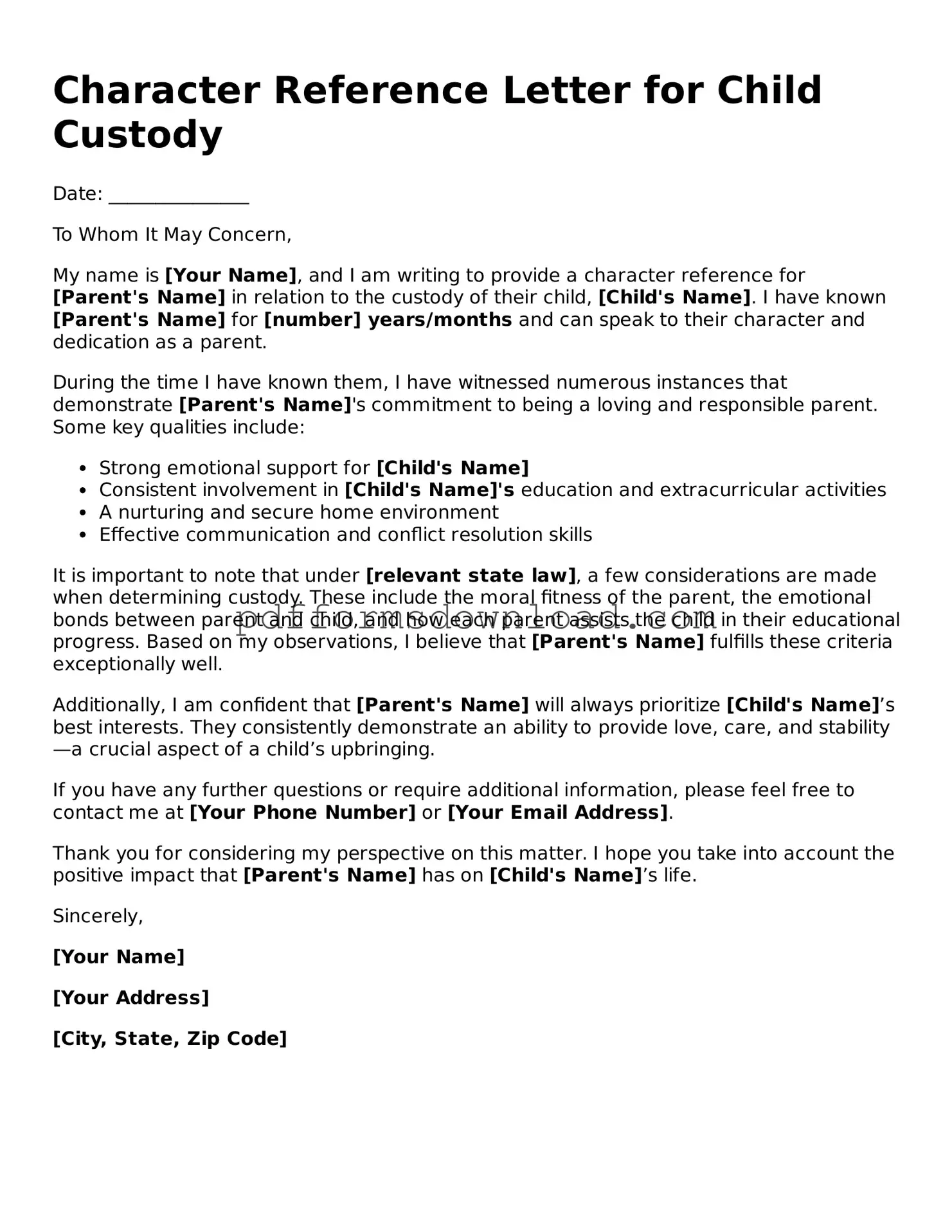What is a Character Reference Letter for Child Custody?
A Character Reference Letter for Child Custody is a document that provides insight into a parent's character and suitability for custody. It is typically written by someone who knows the parent well, such as a friend, family member, or colleague. This letter can help the court understand the parent's strengths and parenting abilities, contributing to custody decisions.
Who should write the Character Reference Letter?
The letter should be written by someone who has a close relationship with the parent seeking custody. Ideal writers include teachers, coaches, family friends, or relatives who can speak to the parent's character and parenting skills. It's important that the writer is credible and can provide specific examples of the parent's positive qualities.
What should be included in the letter?
The letter should begin with a brief introduction of the writer, including their relationship to the parent. It should then highlight specific qualities of the parent, such as their responsibility, nurturing nature, and commitment to their child. Including anecdotes or examples can make the letter more compelling. Finally, the writer should express their belief in the parent's ability to provide a loving and stable environment for the child.
How long should the Character Reference Letter be?
Typically, the letter should be one to two pages long. This length allows the writer to provide enough detail about the parent's character without overwhelming the reader. Clarity and conciseness are key; the letter should be easy to read and to the point.
Can the letter be handwritten?
While a handwritten letter can add a personal touch, it is generally recommended to type the letter. A typed letter is more professional and easier to read. If the writer chooses to handwrite the letter, they should ensure that their handwriting is clear and legible.
Is there a specific format for the letter?
There is no strict format, but the letter should include the writer's contact information, the date, and a formal greeting. The body of the letter should follow a logical structure, moving from the introduction to specific examples, and concluding with a strong endorsement of the parent. Closing with a polite sign-off is essential.
How is the letter submitted to the court?
The letter can be submitted to the court as part of the custody case documentation. It is advisable to provide copies to both the court and the other party involved in the custody dispute. The parent seeking custody should check with their attorney or the court for any specific submission guidelines.
Can multiple letters be submitted?
Yes, multiple character reference letters can be beneficial. Each letter can provide a different perspective on the parent's character and parenting abilities. However, it is important to ensure that the letters do not become repetitive. A diverse set of references can strengthen the case for custody.
What if the writer has a negative opinion about the parent?
If the writer has a negative opinion about the parent, it is best for them not to write the letter. The purpose of a character reference letter is to support the parent in their custody case. A negative letter could harm the parent's chances of gaining custody and may not be helpful in the long run.
